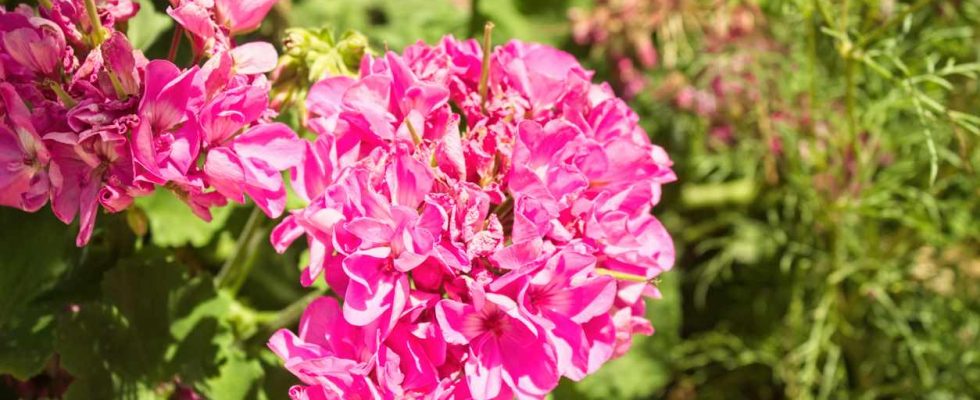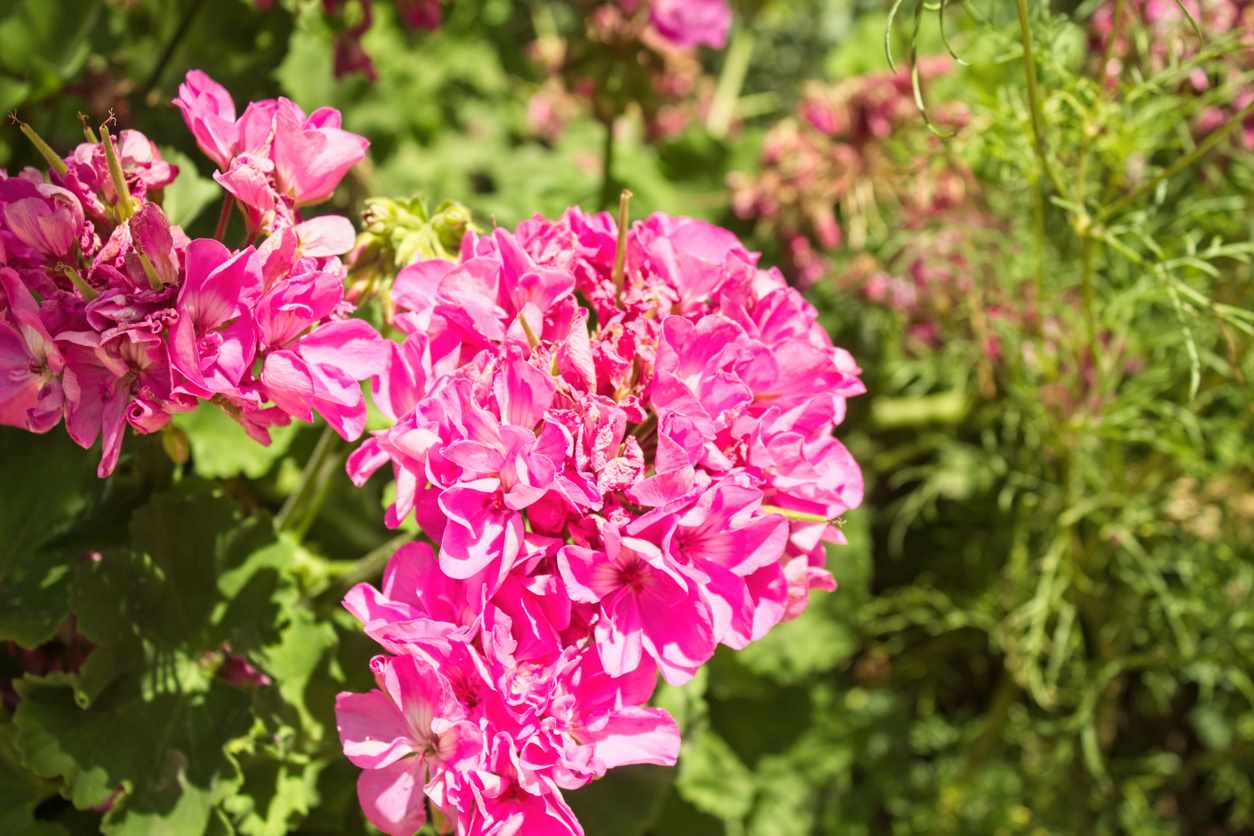
Pelargonium flowers don’t smell anything. On the other hand, their foliage has a characteristic and perceptible odor when, in May, we compose the planters with these “kings of balconies”.
Some foliage has a different smell, more marked but less distinctive. They have the “mimetic” aroma of other plants known: mint, lemongrass, pine, eucalyptus… or that of chocolate. A pot placed in a busy place releases a cloud of scents with each touch. A delight!
A very simple culture
The only small flaw of these pelargoniums: the flowering is less opulent, although charming, than that of the varieties traditionally used in pots or planters. Some compensate for this modest flowering and lack of color by variegated foliageoften very bright, which enhances the neighboring flowers.
In recent years, we have found hybrids combining abundant and brightly colored flowering with particularly fragrant foliage. Combining qualities, they can be used alone, in generous pots, or mixed with other flowers for our greatest happiness.
Easy to grow, they tolerate short absences and can, on occasion, do without some watering. To keep them, just make them spend the winter behind a window kitchen, like a houseplant.
Pelargonium: an astonishing diversity of scents
The range of scents of these pelargoniums is astonishing. Many of them are perfect imitators, replicating known odors such as that of pink (P. graveolens and P. capitatum), of lemon (P. crispum, P. denticulatum and P. vitifolium), of the pines (P. abrotanifolium and P. quercifolium) and some mint (P. tomentosum). Others add their personal nuances and produce a particular aroma.
This is the case of Pelargonium fragranswhich mixes the resinous odors of pine or eucalyptus decorated with a touch of nutmeg.
“Unique” hybrids on the track
Let us add to this a particular group, generally included among the fragrant pelargoniums, but which can be distinguished quite easily: those which we nickname the “unique”. Some gardeners find that their foliage smells uniformly carrot topbut others detect as many nuances as in the “real” fragrant pelargoniums: lemongrass, pine, eucalyptus, etc.
Not really new (it has existed since 1850), this family of hybrid pelargoniums combines fragrant foliage and attractive flowering. Their flowers, on the other hand, are larger (but smaller and fewer in number than those of “balcony” pelargoniums), more numerous and more colorful, generally of red or bright pink color.
In addition, their leaves, small and pleated, are very elegant. They do not cause any difficulties, they form beautiful pots which can be kept as is in the house in winter (in a cool room) or in a veranda protected from frost. To recognize them, no worries: they have the word “unique” in their name: ‘Patton’s Unique’, ‘Jessel’s Unique’, ‘Purple Unique’, ‘Single Scarlet’, ‘White Unique’etc.
1. The smell of pine
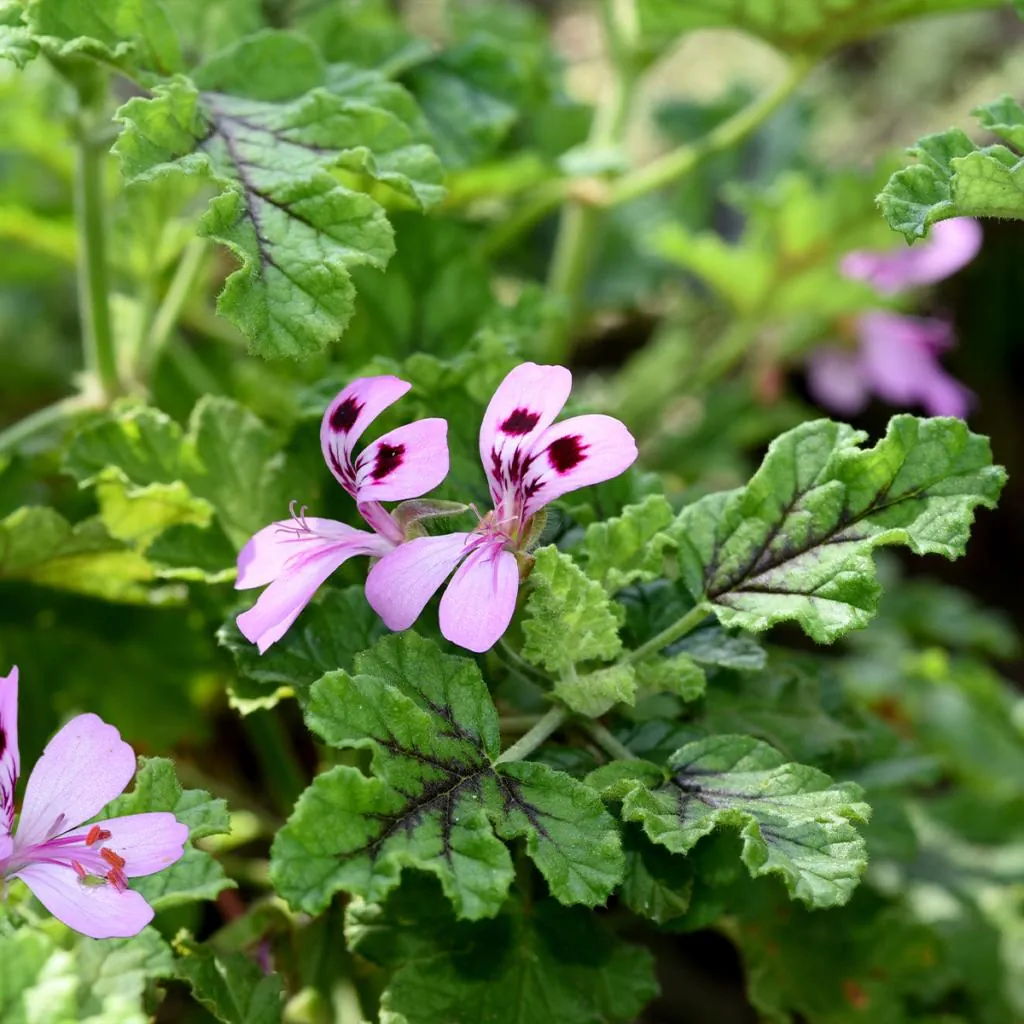

Pelargonium abrotanifolium is a very branched bush with grayish, finely divided and rather sticky leaves. To smell it, you’d think you were in the Landes. Pelargonium quercifolium has broad, lobed leaves like those of an oak, of which the scent is more reminiscent of scrubland than pine, but variable depending on the day. ‘Royal Oak’ is very decorative and ‘Village Hill’ renowned for its beautiful flowering.
2. The smell of mint
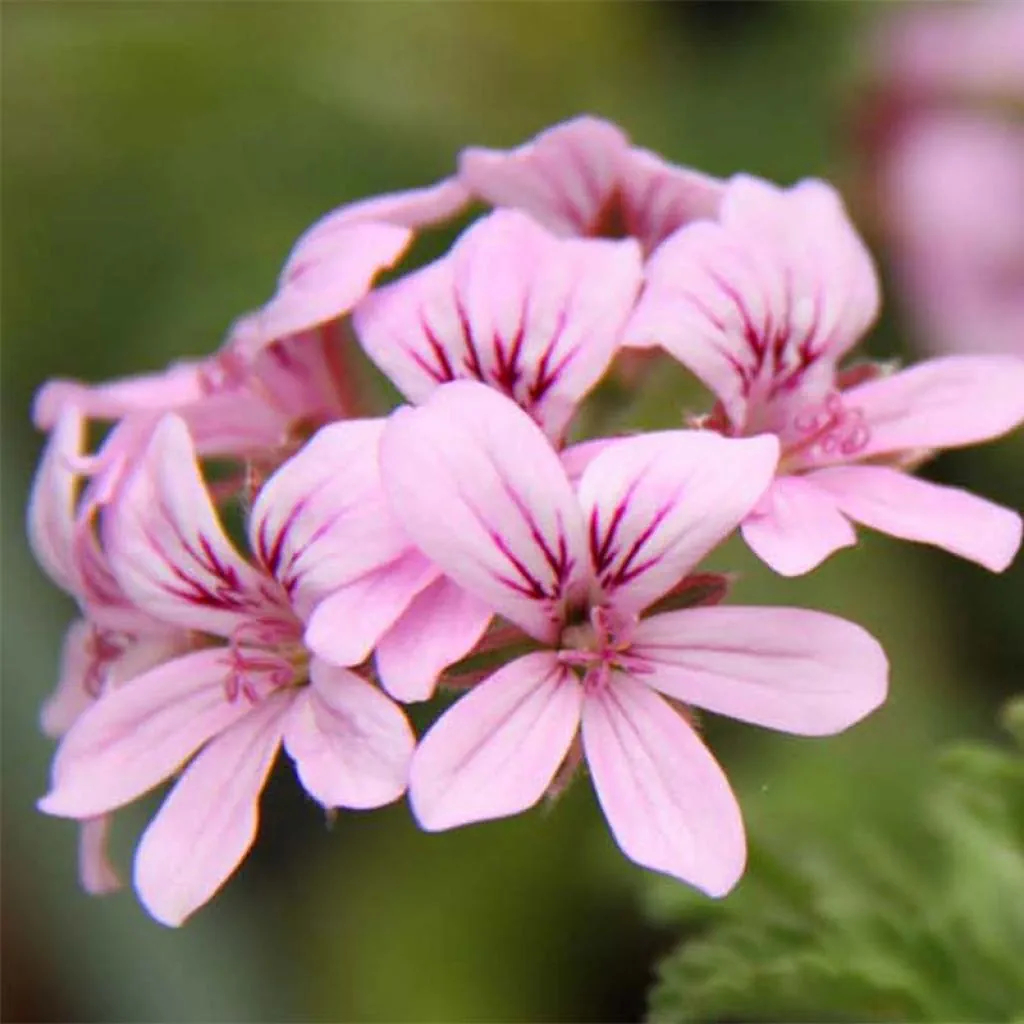

Pelargonium graveolensforme a small, very branched bush with well-cut leaves. Its scent mixes rose and mint. Chocolate so named because of the large brown spot which adorns the heart of its large velvety leaves, smells of mint. ‘Grey Lady Plymouth’ is both elegant and bright with its very jagged leaves, bordered by a thin white margin. At the opposite, Pelargonium tomentosum becomes imposing. Its large, thick, velvety leaves have a very exotic appearance.
3. The smell of roses
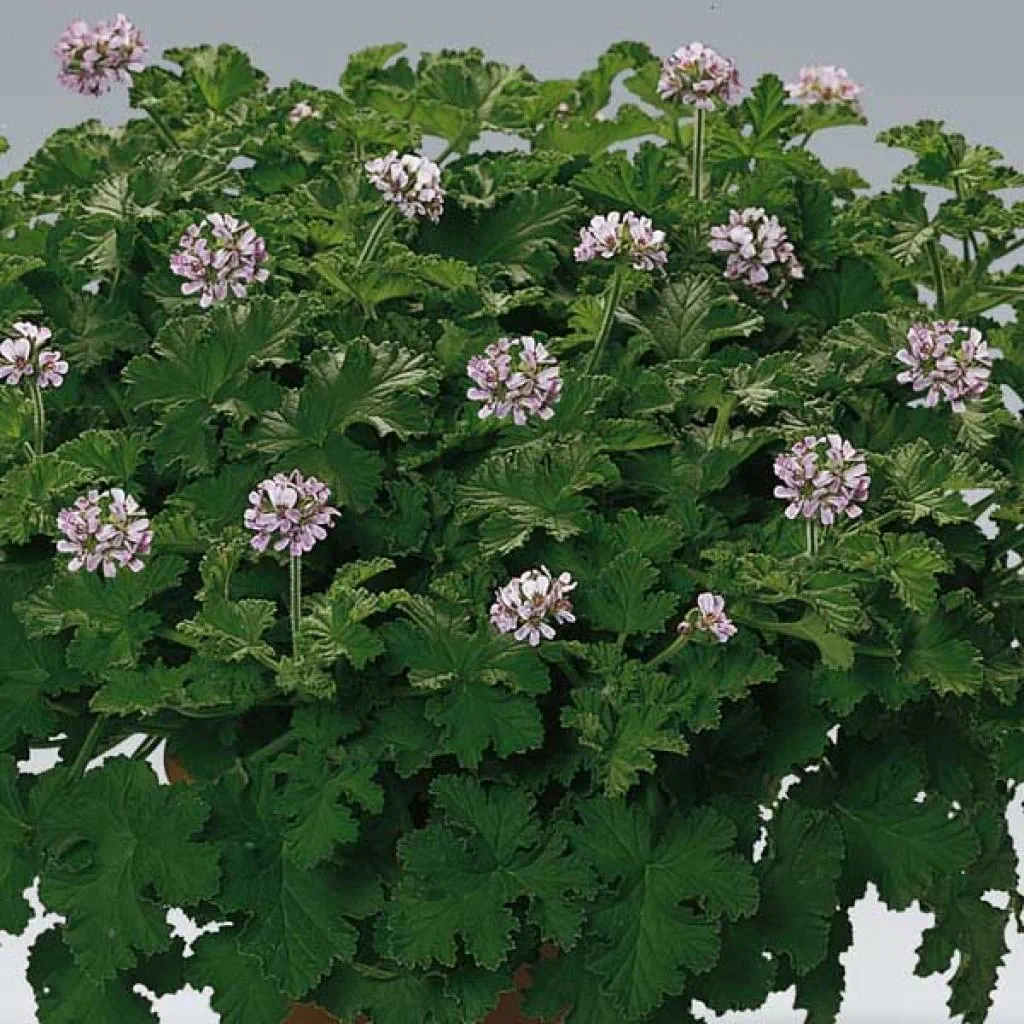

‘Attar of Roses’ and ‘Rosat’ probably release the most pronounced pink frangrances, but Pelargonium graveolens and Pelargonium capitatumont also a scent reminiscent of roses, with a touch of mint for the first, almost “pure” for the second, also widely used for the production of geranium essence.
4. The smell of eucalyptus
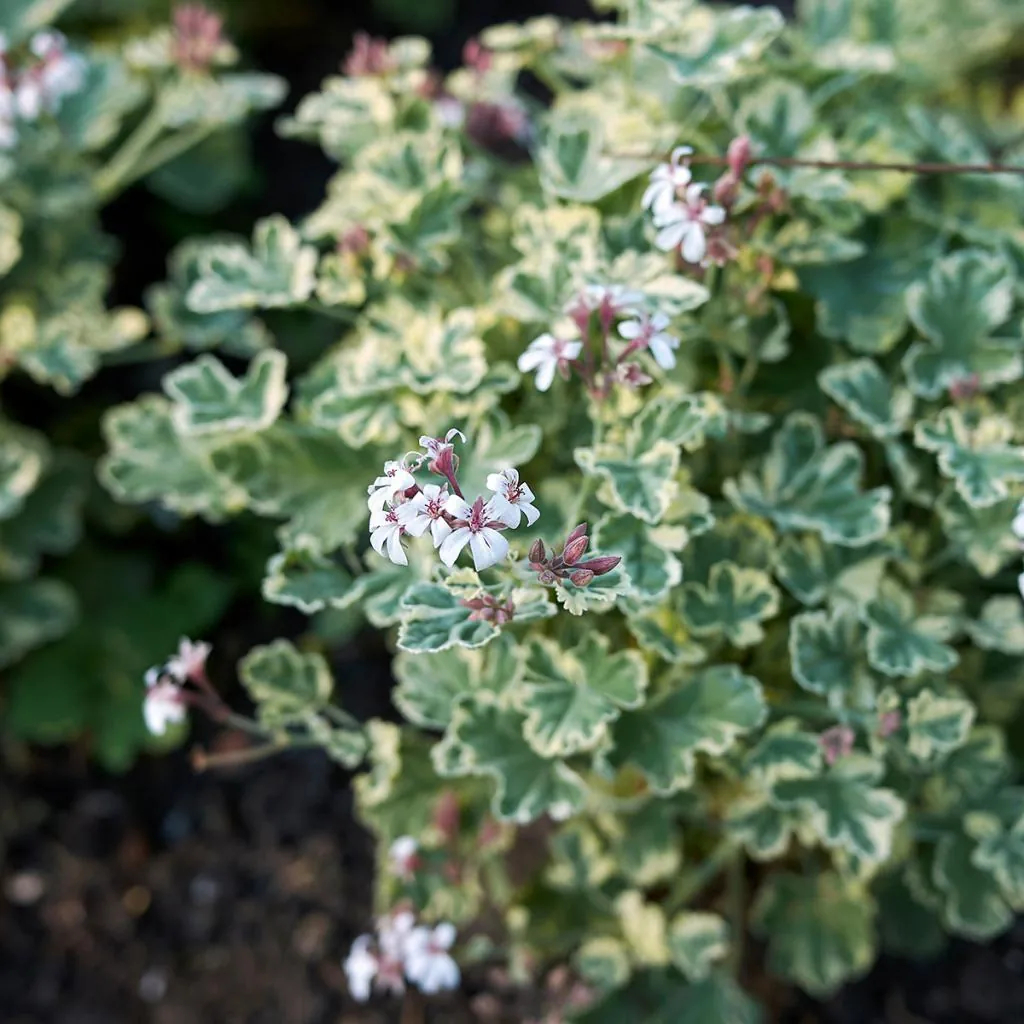

Pelargonium fragrans gives off mixed scents of eucalyptus and nutmeg. There are several variations of variegated foliagealso fragrant.
5. The smell of lemon


It is rather a lemongrass scent which is released when you crush the leaves of ‘Mabel Grey’, one of the best-known varieties. Pelargonium crispum And Pelargonium vitifolium also have a strong lemony scent, as do ‘Atomic Snowflake’, ‘Lemon Fancy’ and ‘Prince Ruppert’. A special mention is awarded to Pelargonium crispum’Variegatum’ whose leaves are highlighted by a creamy white line.
6. Other fruity scents
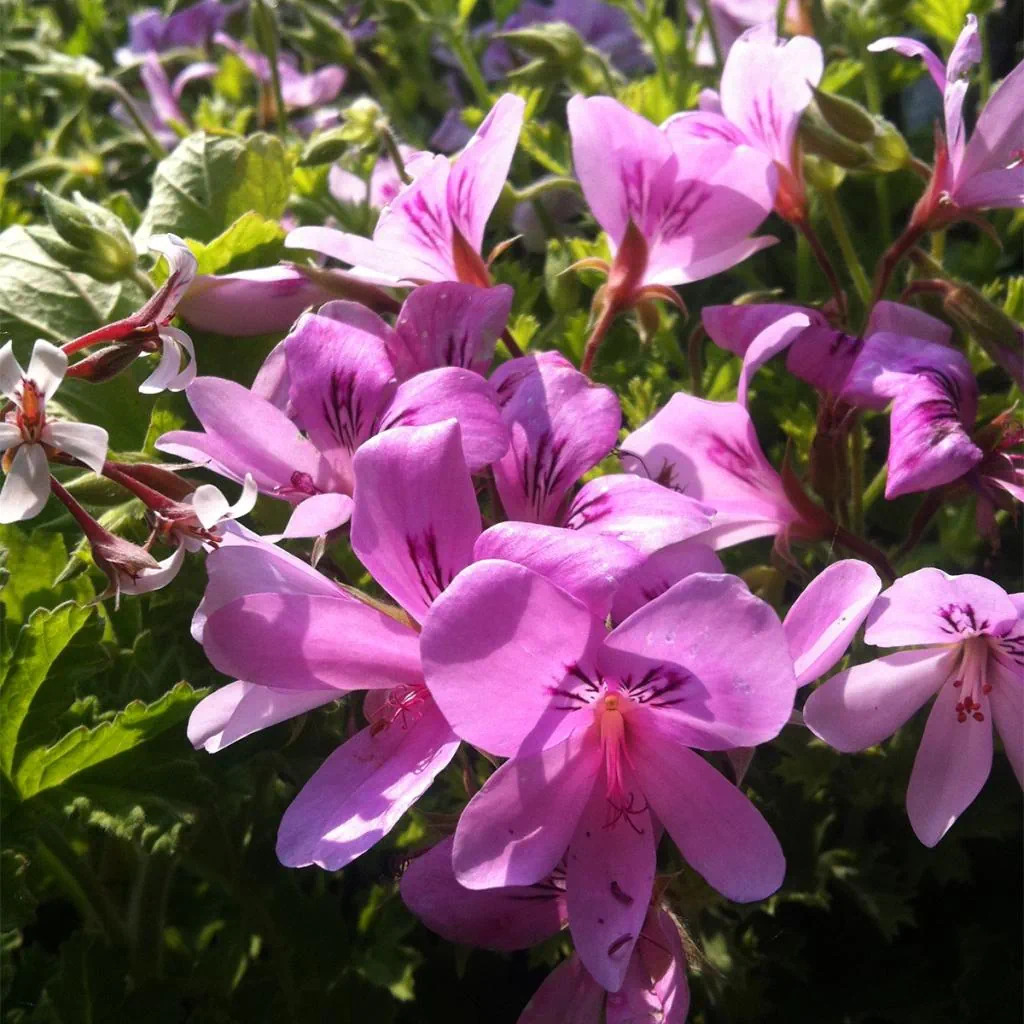

- Orange : The scent of ‘Prince of Orange’ is reminiscent of citrus (the fruit, not the flower).
- Green apple : Pelargonium odoratissimum irresistibly reminiscent of green apples (however nothing to do with the scent of a very ripe apple).
- Coconut : With its scent of sweet candy and coconut, Pelargonium grossularioides is perhaps the most curious… Very exotic!
Thousands of scented hairs
If you don’t immediately notice the smell advertised on the label, don’t be surprised: it sometimes reveals itself the second or third inspirationor after having crumpled the foliage between your fingers.
This operation is necessary because the aromatic essence of pelargoniums is produced by “secretory hairs”, more or less abundant depending on the species (from 40 to 400 per square millimeter). They must therefore be broken to release their essence. The most densely hairy leaves have a velvety and sticky texture, not always very pleasant to the touch, but they exude such pleasant scents…
Pelargonium: king in a pot, but magnificent in the garden
To make the most of their aromas, grow them in pots placed at the bend of an alley, at the corner of the terrace or near the door. Choose containers tall enough to have the sheets within reach, ready to be crumpled. Pots that are taller than wide suit them perfectly. You can also place a pot on a column or on another upturned pot. Citronella-scented pelargoniums are known to repel mosquitoes and other insects.
So don’t hesitate to introduce them – alone or mixed with other seasonal plants – in planters installed on window sills because, even if this insect repellent property is not really founded, the aroma that they exhale with each watering is more interesting than that, more or less pleasant, of traditional pelargoniums.
Don’t hesitate to combine them!
Largely developing pelargoniums (‘Grey Lady Plymouth’, Pelargonium tomentosum…) benefit from being planted in the ground: thanks to their rapid growth, they take on the appearance of a bush in less than two months. Placed at the corner of an alley, they will distill their scents with each touch.
If you find fragrant pelargoniums not floriferous enough, do not hesitate to combine them with more generous plants such as diascias, anthemis, nemesias, cupheas… Avoid species that are very water intensive (scaveolas, fuchsias, begonias, etc.), as soil that is too humid reduces the concentration of the scent of the foliage and risks causing mold in species sensitive to excess humidity.
Finally, if you want to make stews that are out of the ordinary, combine them with fragrant summer flowers (vanilla-scented heliotrope, tobacco) or the purple (and very fragrant) foliage of basil or Nanking perilla. Basil-eucalyptus, rose-vanilla… so many combinations in perspective!

